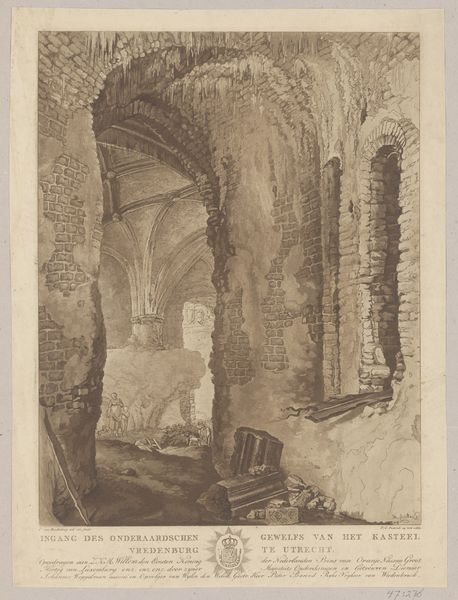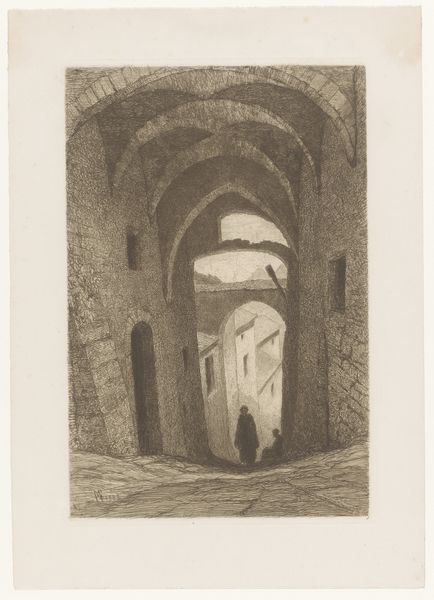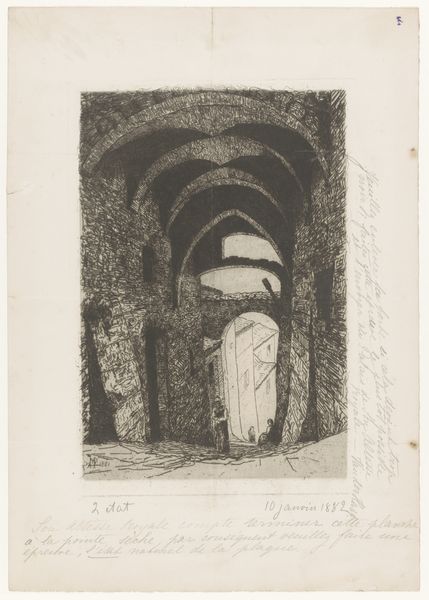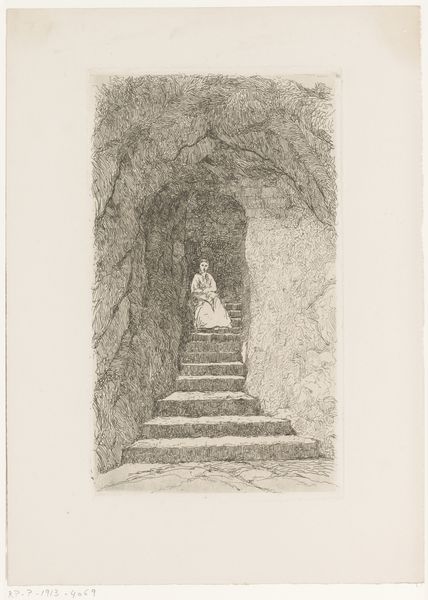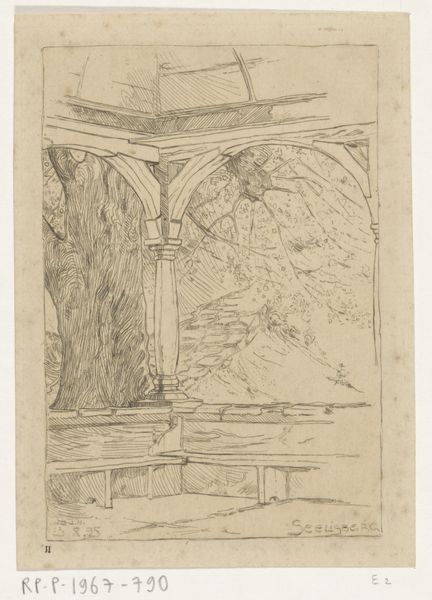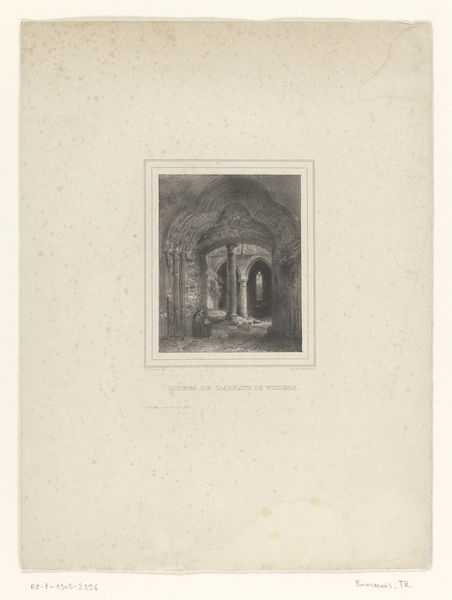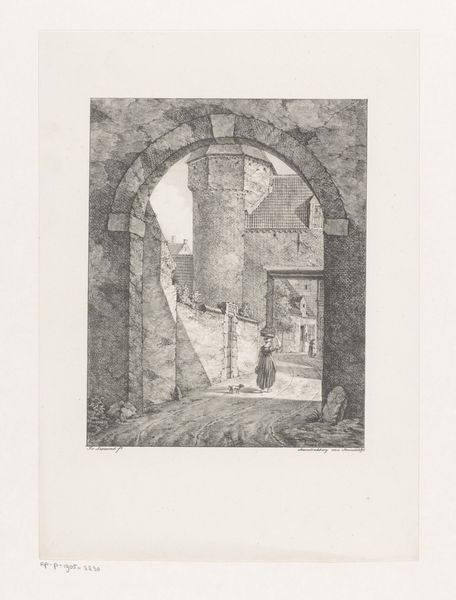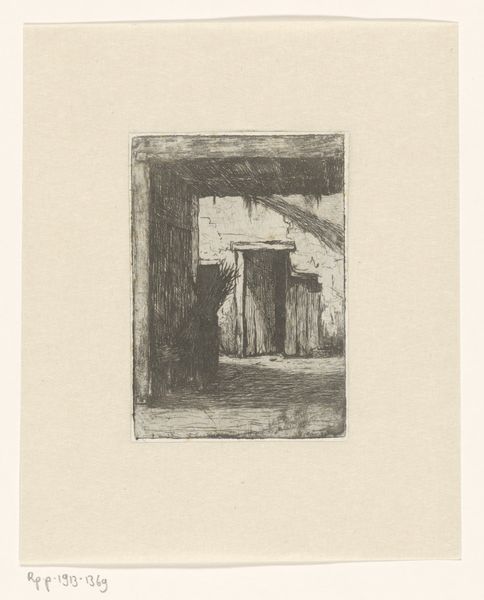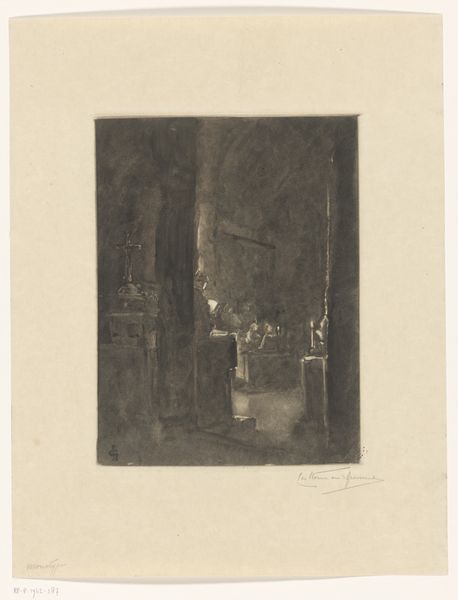
drawing, print, etching
#
drawing
# print
#
etching
#
landscape
#
etching
#
line
#
realism
Dimensions: height 309 mm, width 208 mm
Copyright: Rijks Museum: Open Domain
Curator: This etching from 1883 is titled “Poort met gewelven,” or “Gate with Vaults,” by Maria van Hohenzollern-Sigmaringen, also known as Countess of Flanders. It's a striking depiction of a vaulted passageway. What's your initial take? Editor: It's evocative, almost dreamlike. The monochrome and delicate lines create a feeling of depth and timelessness. There is something both inviting and isolating about it. Curator: Indeed, its dreaminess could speak to the broader aesthetic climate. In this period, there's a preoccupation with mood and atmosphere, visible even in landscapes or architectural studies. The piece's shadowy nature prompts questions: What function did such vaulted spaces fulfill? And how might its intended audience respond? Editor: That contrast is key to my experience with the print. While the overall scene has a haunting feel, a figure is seen standing at the end of the passageway, seemingly approaching from the light into shadow. Is that meant to be comforting or cautionary, and for whom? Curator: That lone figure certainly shapes how we perceive this space. Its ambiguous nature suggests it might carry spiritual or religious connotations. It almost becomes allegorical: a passage through time, a transition point... It may point to social attitudes around class and isolation and a yearning to commune across those differences. Editor: Right. By placing a solitary, possibly devotional, figure within the vaulted tunnel, the artist subtly references those enduring power structures in Belgian society. But without any firm evidence about the historical social structures or its reception at the time, how do we confirm the allegory or devotional interpretations? Curator: We can’t entirely. We examine historical and cultural trends, understand this moment's class tensions and its visual language around devotionality, and build our best interpretation from these layers. Consider her lineage within royalty, did this factor into her artistic practice or choice of subject matter? We look for those intersections. Editor: The print certainly makes you reflect on how space influences behaviour, especially in controlled public areas. Curator: Agreed, the artwork remains evocative due to how Maria weaves together architecture, figure, and medium. Editor: It's a piece that asks more than it answers, which, from a historical and art historical position, creates a fascinating case study about visual storytelling.
Comments
No comments
Be the first to comment and join the conversation on the ultimate creative platform.
